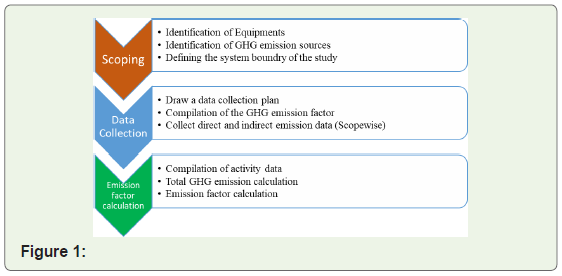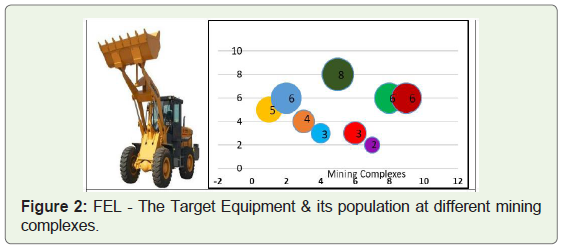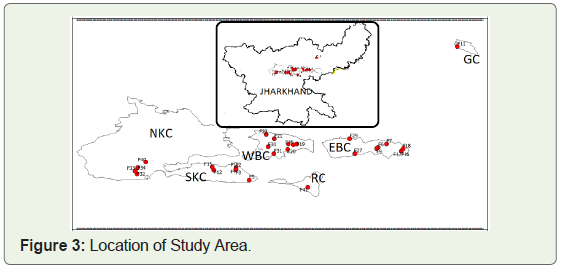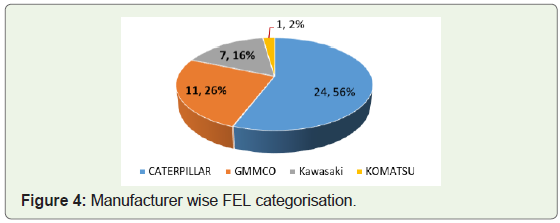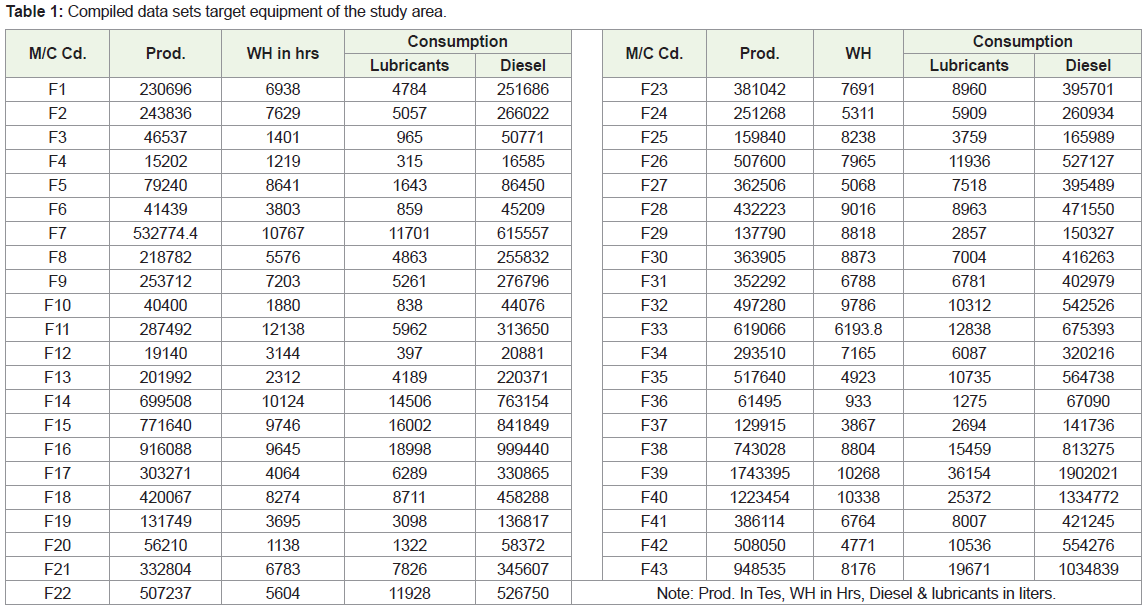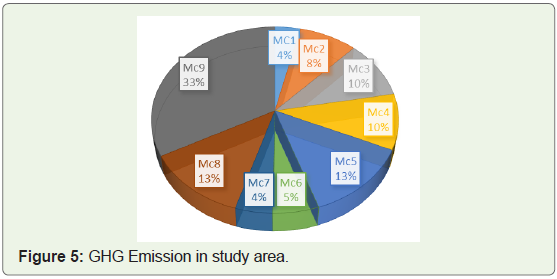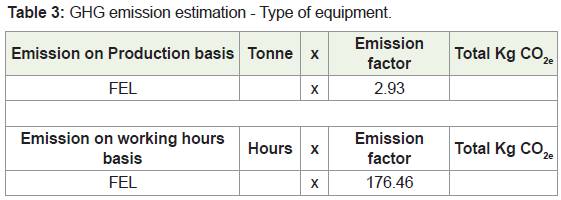Review Article
Payloader and GHG Emission - An Attempt to Derive Empirical Relation for Emission Factor
Kumar M*
Coal India Limited, India
Corresponding author: Kumar M, Coal India Limited, India, Tel no: +91-9431356788; E-mail: mkpatna69@gmail.com
Citation: Kumar M. Payloader and GHG Emission - An Attempt to Derive Empirical Relation for Emission Factor. J Environ Soc Sci. 2018;5(2): 137
Copyright ©2018 Kumar M. This is an open access article distributed under the Creative Commons Attribution License, which permits unrestricted use, distribution, and reproduction in any medium, provided the original work is properly cited.
Journal of Environmental and Social Sciences | Volume: 5, Issue: 2
Submission: 30/11/2018; Accepted: 26/12/2018; Published: 29/12/2018
Abstract
This research paper provides an attempt to derive empirical relation for emission factor for Front End Payloader machines (FEL) being used to load coal at coal mining complexes from coal face/stock yards over dumper, belt or other hauling equipment etc. The findings are of the recent field study for the mining activities from 2013-2016. We successfully sampled 43 number of equipment, with 1188 number of data sets in 9 nos. of mining complexes of a subsidiary of major coal producing company, situated in different districts of Jharkhand, India. These 43 equipments under study have loaded 16.97 million tons of coal and consumed 1.8 x 104 Kiloliters of HSD & 358 Kiloliters of lubricants during the study period. Emission Factors (EF) for the equipment was derived from the data sets, which are in consistent with the results. The emission factor for Front End Pay loader was found to be 2.93 kg/Te, 176.47 kg/hr based on coal production in Tones and working hour respectively. This article also covers the sector wise total GHG emission of the study area. During the study period it was found that 0.5 Lakh tons of CO2e have been emitted. This study will help the coalmines manager in reducing carbon emissions along with innovations in all the dimensions of sustainability.
Keywords:
Opencast; FEL; CO2e; Emission
Introduction
Climate change and its effects are a harsh reality faced today. The ambitious emission reduction measures modelled in most global emission pathways are not enough to achieve the Paris Agreement targets for limiting temperature rise [1]. It is the high time, where we have to think of aligning the pledge with the 1.5 degree Celsius goal - a more stringent target than existing agreement to limit average temperature rise within 2 degree Celsius by 2100 in the upcoming Katowice Climate Change Conference (COP24) in Poland in December 2018. The most scientific estimates show that to keep the goal of limiting Green House Gas (GHG) emission so as limiting warming to 1.5 degree Celsius rather than 2 degrees, the global emissions trajectory must not only reach net zero by the second half of the century but also continue downward into net negative emission. There is need to pursue aggressive emission reductions. As per ministry of Earth Sciences “India and many other countries are already facing impact of 1 degree Celsius of global warming. It’s therefore important for all the nations to make efforts towards limiting the warming. It’s scientifically possible to do that. India has already taken several actions in the direction”. Though coal-mining activities show lower GHG emission, but still some activities need attention for a reduction in GHG emission [2]. Knowledge of process wise, equipment wise emission factor will help the process. For this pinpointing all the activities that are, emitting GHG needs to be studied. There are possibilities that some equipment used in some processes are emitting little bit GHG but they can be removed or lessened using lesser effort needs to be addressed. Many technologies could potentially play a role in carbon removal from the atmosphere to meet the target set at Paris. The removal of CO2 and its storage is immense expensive. Thus, inexpensive way to meet the target is reducing emission from the already prevailing system. Some work for estimation of carbon footprint has been made [3,4]. GHG emission per ton of coal production in the coal mining process has been estimated as 23 kg per ton of coal production [5]. The emission factor for Side discharge loader, Load haul dump machine have already been coined based on coal production below ground, and equipment working hour [6]. This paper explores deducing the emission factor for Front End Pay loader deployed in opencast coal mining process for loading coal from face or stockyards to the conveying equipment. As per Intergovernmental Panel on Climate Change, the scope of emission of this equipment falls in scope 1 for burning fossil fuel (Diesel) and oxidizing of lubricants being used in loading coal and allied activities [2,7].
Hypothesis
The hypothesis of this paper is that study of carbon footprint in coalmines is in young stage. The cumulative emissions from the equipment engaged in winning coal will estimate GHG emission from the coalmines.
Objective
The main objective of the study is to deduce derive Emission factor for Front End Pay loader machines (FEL) being used to load coal from coal mining face to dumper, belt etc.
Materials and Methodology
The methodology for EF for FEL involves calculating the total emissions from the specific equipment and dividing that figure by the total amount of coal produced hereby termed as Production (P) or time taken by specific equipment in hours, hereby termed as working hour (WH) [6,8,9] (Figure 1). Data for the quantities of coal produced, working hour, Diesel consumption and lubricant consumption for specific equipment within dedicated mining complexes were collected from different mining complexes, and their corporate offices and dedicated websites. The equipment under study is Front End Loader hereby termed as FEL deployed in opencast mines for loading coal (Figure 2). Total emissions were calculated from these data by applying the appropriate default emission factors as per Guidelines for National Greenhouse Gas Inventories [8,10-13].
The FEL or Pay loader is a heavy, wheeled vehicle with a large, movable bucket or blade at the front (Figure 2). The EF for FEL are not available. Different approaches have been applied to evaluating machine wise EF, based on field data collected from different mining complexes. As mentioned above Observation of FEL include in the study.
Data Collection
The adaptation of data collection compared to those of our previous work of GHG emission assessment for an opencast mine [13,14], derivation of emission factor for Side discharge loader and Load haul dump machine enabled us to identify the corresponding target equipment more precisely [6]. The protocol was flexible allowing the selection of target equipment in desired mining complexes. For the convenience of study, 43 equipment of the study area were divided into 9 mining complexes i.e. MC1 to MC9. These mining complexes are of one of the major subsidiary of the major coal producing company of India situated in Jharkhand, India. The location where the study was made is illustrated in (Figure 3).
The individual equipment were coded and allotted a unique number. The population of the surveyed equipment at different location are shown at (Figure 2). The diesel consumption, lubricant usages and working hour were collected for the target equipment along with coal loaded by this equipment from the selected mining complexes. It were observed either Caterpillar or GEMMCO make dominated amongst deployed equipment, which were 56% & 26% respectively (Figure 4). The capacity varies from 5.5 to 6.4 cum.
The data were collected from the period from 2013-2016. We successfully sampled 43 number of equipment, with 1188 number of data sets. These data sets were successfully sampled, collected, segregated, analyzed and compiled and have been presented at (Table 1).
Data Analysis
Different equipment were classified on the basis of make model. By using data set collected, GHG emission was estimated for equipment under study [11,12].
Calculation of carbon footprint
For calculating GHG emission for individual equipment following empirical relation developed by Manoj and Sangeeta was used [15].
Where,
TE = Total emission in kg CO2e
ES = Emission due to various activity level
By using equation (1) and (2) as above, the emission in the study area was estimated for each data set. Total emission during the survey period was estimated to be 0.497 Lakh tons of CO2e emission. The percentage emission in different mining complexes by deploying pay loaders are shown at (Figure 5).
Once the total emissions from the sampled equipment were calculated, the total emission was divided by the total amount of coal production and total working hours taken to load the coal as the case may be for deriving the equipment specific emission factor. In order to calculate emissions the same steps were followed, applying the appropriate emission factors for different sources as per IPCC [8,9,11].
Where,
EFFEL (P: Emission factor of SDL on Production basis in Kg CO2e/ tons
EFFEL (WH: Emission factor of LHD on working hours basis in Kg CO2e / hrs
P : Coal Production in Tons by the equipment
WH: Working Hours in Hrs of Equipment
EFD: Emission factor of Diesel in Kg CO2e / Litres
CD: Consumption of Diesel in Litres by the equipment
CLub: Consumption of Lubricants in Litres by the equipment
ρlub: Density of lubricant
ODULUB: Oxidising Unit for Lubricant in no. (from 0.1 - 1.0)
CC: Carbon Content in kg C/GJ
NCV: Net Calorific Value in TJ/Gg
MR: Mass Ratio i.e., CO2 /C (=44/12)
Emission Factor thus derived by using empirical equation 3 & 4 are tabulated at (Table 2) as below:
The emission factor so derived can be used for calculating total GHG emission where this equipment are deployed and can be calculated using (Table 3) as under:
Use of emission factor
The emission factor calculated above may be used as emission inventory estimation and would encourage mine managers in taking corrective steps towards sustainability.
Conclusions
The present study developed the framework to assess emission factor for Front End Loader/Pay loader. Emission Factors (EF) for the equipment were derived from measurements, which are in consistent with the results. The emission factor as tabulated for FEL/Pay loader 2.93 kg CO2e/tonnes of coal production and 176.46 kg CO2e/working hour. During the study period it was found that 0.5 lakh tons of CO2 was emitted at different mining complexes. The application has been applied for only 43 equipments at 9 locations only. It would be good to include more machinery from different locations in future with varied size of complexes along with different geographical locations. Study for absorption, adsorption, release of fugitive emission due to handling of coal is required to be incorporated for future work for accurate estimation of GHG emission to the open atmosphere due to deployment of FEL/Pay loader for loading coal. Though the emission factor so developed has wide application in assessing GHG emission at workplace where this equipment are planned to be deployed for the purpose of loading coal at face, siding etc. The uniqueness of this factor is that it has both the components i.e. carbon footprints as well as sustainability aspects. Results of this would encourage mine managers in taking corrective steps towards sustainability.
Acknowledgements
The authors would like to acknowledge the coal mines officials specially the excavation officials of Central Coalfields Limited Ranchi for extending their help and coordination. We would also like to thank all for online and offline support for completing this study. The views presented by authors are solely their interpretation.
References
- (2015) Paris Agreement. United nation, pp: 1-27.
- cBalance Solutions Hub (2014) Carbon Footprint of Coal Mines (Open Cast Mines) - CCL. Version: Feb 03, 2014.
- Garg A, Bhattacharya S, Shukla PR, Dadhwal VK (2001) Regional and sectoral assessment of greenhouse gas emissions in India. Atmos Environ 35: 2679-2695.
- (2010) GHG Inventory report for electricity generation and consumption in India, 2009-10. cBalance Solutions Pvt. Ltd., pp: 1-12.
- Kumar M, Sangeeta (2015) Carbon Footprint Assessment Model for Opencast Coal Mine. IMEJ.
- Kumar M, Sangeeta (2018) Off-Road Emission Factor for Side Discharge Loader & Load Haul and Dump Machines. GENIUS, Journal no. 47100, Vol. 6: 50-63. VI, Issue - II, Part- II, Feb-July 2018, ISSN 2279-0489.
- Kumar M (2015) Carbon Footprint Measurement at An Opencast Project - A Case Study, project work submitted to WWF-India and NLU, Delhi for the partial fulfillment for the award of the certificate of post graduate diploma in environmental law and policy, pp: 1-62.
- IPCC (2006) IPCC Guidelines for National Greenhouse Gas Inventories: Volume 4: Agriculture, Forestry and other land use. Intergovernmental Panel on Climate Change. Paris, France.
- IPCC (1997) Revised 1996 IPCC Guidelines for National Greenhouse Gas Inventories: Reference Manual (3). Chapter 4: Agriculture. Intergovernmental Panel on Climate Change. Paris, France.
- DEFRA (2013) Government GHG conversion factors for company reporting: Methodology paper for emission factors. Department for Environment, Food and Rural Affairs, London, pp: 27-40.
- IPCC (2015) Climate Change 2014: Synthesis Report. Intergovernmental Panel on Climate Change, pp: 1-167.
- (2004) Greenhouse gas protocol: A corporate accounting and reporting standard. WRI and World Business Council for Sustainable Development.
- (2011) Sustainability Reporting Guidelines - Version 3.1. Global Reporting Initiative (GRI), Amsterdam.
- Kumar M, Sangeeta, Kumar BA (2015) Carbon footprint measurement at an opencast coal mine. Kerala Environment Congress: National Workshop on Climate Change and Sustainable Development, pp: 153.
- Kumar M, Sangeeta (2015) Carbon Footprint Assessment - A tool to conserve resource. JSPCB, pp: 23-26.

